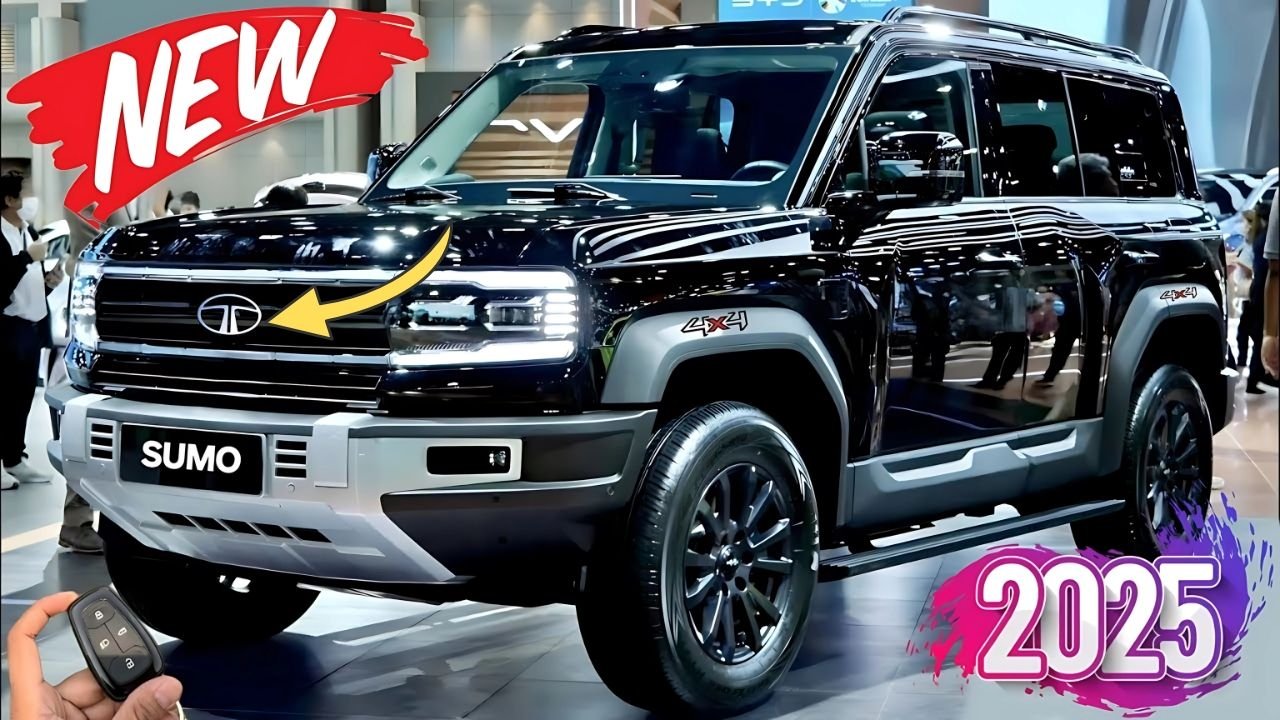In the rich tapestry of India’s automotive history, few names hold as much emotional and practical significance as the Tata Sumo. Launched in 1994 by Tata Motors, this legendary vehicle went on to become one of the most trusted and widely-used multi-utility vehicles in the country. From bustling city streets to the remotest rural terrains, the Sumo symbolized strength, reliability, and a sense of pride.
The Birth of the Tata Sumo: A Milestone in Indian Mobility
The Tata Sumo was named in honor of Sumant Moolgaokar, the visionary former Managing Director of Tata Motors. It was introduced at a time when India’s utility vehicle market was dominated by the likes of the Mahindra Jeep. The Sumo changed the game completely, offering a homegrown alternative tailored to Indian conditions.
Within just three years of its launch, Tata Motors sold over 1 lakh units—a massive achievement that underscored the vehicle’s instant popularity.
Engineering Brilliance Behind the Tata Sumo
Built on the sturdy Tata X2 body-on-frame chassis, initially adapted from the Tata Telcoline, the Tata Sumo was designed for durability. The first-generation model came with a 2.0-litre diesel engine developed under license from Peugeot, offering 63 bhp and mated to a 5-speed manual gearbox. The focus was clear—keep it simple, strong, and reliable.
Its high ground clearance, rugged suspension, and boxy design weren’t just aesthetic choices—they maximized cabin space and allowed the Sumo to dominate India’s rough roads with ease.
The Evolution of Tata Sumo Over the Years
Over its 25-year production run, the Tata Sumo underwent numerous upgrades to meet the changing expectations of Indian consumers. Here’s a quick look at how it evolved:
- 1996: Introduction of the more refined Sumo Deluxe.
- 2000: Launch of the Sumo Spacio with a larger 2956 cc engine from the Tata 407.
- 2004: Arrival of the Sumo Victa with modern features like power windows, keyless entry, and more.
- 2007: Sumo Victa Turbo DI debuted, combining power with practicality.
- 2012: Tata Sumo Gold introduced with a powerful 3.0L CR4 diesel engine delivering 85 bhp and 250 Nm torque.
- 2013: Final facelift added dual-zone AC, better interiors, and updated features.
Each version kept improving upon its predecessor while retaining the original DNA of the Tata Sumo—a tough, reliable vehicle for Indian families and businesses.
Also Read – Canada New Driving Law Starts July 2025 – Important Changes Every Driver Should Know
Cultural Impact of the Tata Sumo in India
The Tata Sumo was not just a vehicle—it was a cultural icon. From being the preferred choice for government departments and taxi operators to becoming a trusted companion for joint families in rural India, the Sumo earned a reputation that few vehicles could match.
Its ability to carry 7–10 passengers comfortably made it a hit in towns and villages. Owning a Sumo often symbolized upward mobility and business success. Its ease of maintenance and affordable spare parts ensured it remained a go-to choice for decades.
Tata Sumo vs Rivals: Standing Tall in Competition
Throughout its life cycle, the Tata Sumo was a direct competitor to the Mahindra Bolero. While both vehicles offered similar strengths in durability and affordability, the Sumo carved a unique space thanks to its design and Tata’s widespread service network.
In later years, it also faced competition from vehicles like the Maruti Ertiga. Yet, it retained a loyal customer base that valued its practicality over modern styling.
End of an Era: Tata Sumo’s Discontinuation and Its Legacy
In April 2019, the production of the Tata Sumo officially ended, marking the close of a glorious chapter in Indian automotive history. The decision was driven by changing safety and emission norms and Tata’s pivot to newer models like the Harrier.
Yet, the Sumo’s legacy lives on. Even today, many Sumos are running strong on Indian roads. In the used car market, well-maintained models fetch between ₹5.8 lakh to ₹8.9 lakh depending on their variant and condition.
The Possibility of a Tata Sumo Comeback
Interestingly, 2025 has brought whispers of a potential comeback for the Tata Sumo. Reports suggest that Tata Motors might revive the legendary nameplate with a modern twist—possibly with a hybrid or electric powertrain.
If true, this would be a full-circle moment for the Sumo. A modernized version retaining its rugged DNA but equipped with the latest technology could once again capture the hearts of Indian buyers.
Tata Sumo’s Enduring Legacy
From 1994 to 2019, the Tata Sumo stood as a symbol of robust Indian engineering and practicality. It wasn’t just about moving people—it was about supporting livelihoods, transporting goods, and becoming part of countless Indian stories.
As India’s auto industry moves toward greener and more technologically advanced vehicles, the Tata Sumo remains a shining example of how simplicity, reliability, and local understanding can create a lasting impact.
Whether or not we see a new Tata Sumo on Indian roads in the future, the legacy of this rugged warrior will continue to inspire and remind us of what true utility and value look like.
Some Important Link
| Telegram Group | Click Here |
| WhatsApp Group | Click Here |
| Home Page | Click Here |















